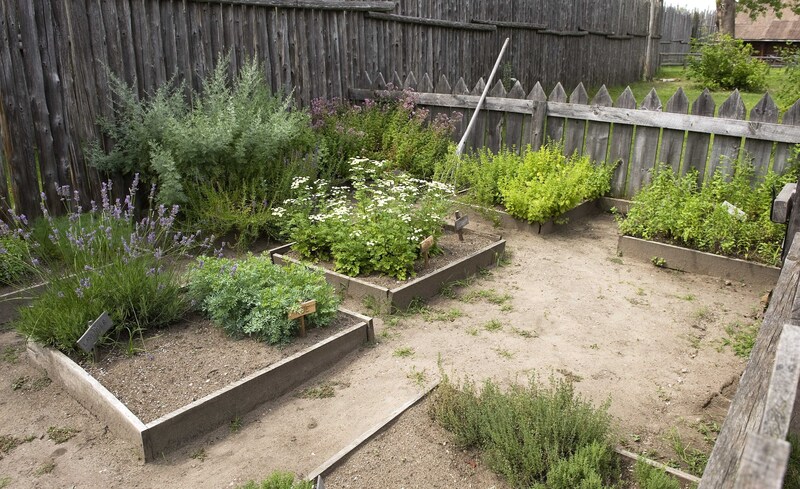Effective Wind Mitigation Techniques for Your Garden
Posted on 27/08/2025
Effective Wind Mitigation Techniques for Your Garden
Are strong winds wreaking havoc in your garden, damaging your delicate plants and eroding valuable topsoil? Wind mitigation is a crucial aspect of garden planning, especially if you live in an area prone to gusty conditions. Implementing the right wind mitigation strategies for your garden not only protects your greenery but also ensures healthy plant growth and a pleasing landscape.
In this comprehensive guide, discover the best techniques to mitigate wind in your garden, learn how to plan an effective windbreak, and find solutions tailored to a variety of gardens--no matter their size or style.

Understanding the Importance of Wind Mitigation in Gardens
Wind can cause several problems in gardens, including:
- Physically damaging plants--breaking stems, tearing leaves, and uprooting seedlings.
- Reducing soil moisture by increasing the evaporation rate.
- Promoting soil erosion, leading to the loss of fertile topsoil.
- Interfering with pollination by displacing pollinators and pollen.
- Stunting plant growth due to excessive transpiration and stress.
Given these risks, wind protection for gardens is essential, particularly in open spaces, coastal regions, and elevated locations.
Key Principles of Wind Mitigation in Gardens
Before diving into the solutions, it's vital to understand the key principles behind wind mitigation strategies for gardens:
- Deflection: Redirecting wind flow above, around, or away from vulnerable garden areas.
- Dissipation: Reducing wind speed through obstacles that disrupt airflow.
- Buffering: Creating zones where wind speed is gradually lessened before it reaches sensitive plants.
A combination of these principles makes for an effective wind mitigation plan.
Assessing Wind Vulnerability in Your Garden
Not all gardens face the same wind exposure. To determine which wind protection techniques are best for your garden, consider:
- Prevailing wind direction: Observe the primary direction of strong winds throughout the year.
- Wind speed: Assess whether conditions are breezy, gusty, or turbulent.
- Current garden layout: Note any existing windbreaks, buildings, or natural features.
- Plant selection: Identify wind-sensitive plants needing protection.
By mapping these factors, you can develop a tailored garden wind mitigation strategy that targets problem zones.
Top Wind Mitigation Techniques for Your Garden
1. Planting Effective Windbreaks
One of the most natural and visually pleasing ways to reduce wind in your garden is to install windbreaks. A windbreak is a barrier--usually of living plants or trees--that interrupts the flow of wind and lessens its damaging effects.
Types of Windbreaks:
- Hedges: Dense shrubbery such as boxwood, privet, or evergreen laurel.
- Tree Rows: Rows of trees like conifers, pines, or native evergreens that offer robust year-round protection.
- Mixed Plantings: Combining shrubs and trees at different heights for a stepped protection effect.
*For maximum effectiveness, plant windbreaks at a 90-degree angle to prevailing winds.* A well-planned windbreak can reduce wind speed for a distance up to 30 times its height on the leeward (protected) side.
Tip: Avoid solid walls of vegetation. Instead, use staggered or layered plantings, which slow and filter the wind rather than create turbulent eddies.
2. Using Structures as Wind Barriers
Garden architecture can play a vital role in shielding your garden from wind. Consider these structural wind mitigation solutions:
- Fences: Semi-permeable fences (like louvered, slatted, or woven panels) break up wind while allowing some airflow, reducing turbulence.
- Trellises and Pergolas: Support climbing plants that form living screens, blending beauty with function.
- Walls: Solid garden walls offer effective localized wind protection but may cause downdrafts and turbulence--combine with vegetation for the best results.
- Greenhouses and Sheds: Arrange structures strategically to divert and calm incoming winds near sensitive planting areas.
Note: For best wind mitigation results, place structures where they block prevailing winds but don't throw intense turbulence onto your most delicate plants.
3. Creating Microclimates with Layered Planting
Layering plants of varying heights creates microclimates that cushion sensitive species from harsh winds. Here's how to achieve this:
- Tall backbone: Use robust trees or tall shrubs as the outermost defense.
- Medium layer: Plant medium-sized shrubs or ornamental grasses next.
- Groundcover: Finish with low-growing plants and mulch to shield the soil and roots.
This method not only reduces wind impact but also enhances biodiversity, supports wildlife, and adds aesthetic value to your garden.
4. Installing Temporary Wind Breaks
Seasonal or newly established gardens may require quick-fix wind mitigation. Temporary barriers can buy time for permanent solutions to grow.
- Windbreak fabric: Manufactured screens (such as shade cloth or burlap) mounted on posts offer instant wind protection.
- Plastic sheeting: Provides emergency shelter for individual plants but may overheat certain species if left on long-term.
- Garden netting: Mesh nets offer flexibility for small vegetable patches or seed beds vulnerable to wind.
Tip: Remove or adjust temporary windbreaks as your permanent plantings mature.
5. Using Mulch to Protect Soil
Wind can strip the topsoil and dry out the ground. Applying a thick layer of mulch confers multiple benefits:
- Reduces soil erosion by anchoring loose particles.
- Conserves moisture by limiting evaporation caused by strong winds.
- Improves soil health and regulates root temperature.
For garden wind mitigation, use organic mulches (wood chips, straw, shredded leaves) or decorative gravel to shield vulnerable areas.
6. Staking and Supporting Vulnerable Plants
Tall or top-heavy plants, young trees, or climbing vines can snap or bend in stormy weather. Use these wind mitigation techniques for plant support:
- Stakes: Drive sturdy bamboo or wooden stakes next to stems and secure with flexible ties.
- Cages and frames: Tomato cages and wire frames offer added support for vegetables and flowers.
- Guy wires: Anchor young trees against prevailing wind forces until their root systems mature.
Remember: Loosen ties and monitor growth to avoid stunting your plants or causing girdling injuries.
Special Wind Mitigation Tips for Coastal and Exposed Gardens
Coastal Gardens
- Choose salt-tolerant species for windbreaks, such as tamarisk, sea buckthorn, or escallonia.
- Use clipped hedges over walls to shield both wind and salt spray.
- Mulch heavily to combat both wind and saline soil drying.
High Wind Urban Settings
- Install rooftop wind barriers using light mesh screening planted with trailing or climbing plants.
- Use container clusters (groups of potted plants) to buffer wind on balconies and decks.
- Employ vertical gardening systems as both wind protection and privacy screens.
Choosing the Best Wind-Resistant Plants for Your Garden
Selecting the right wind-tolerant plants enhances any garden wind mitigation plan. Consider these resilient choices:
- Grasses: Ornamental varieties like Molinia, Panicum, and Miscanthus withstand movement and can act as flexible wind filters.
- Conifers: Plant species such as Scots pine, juniper, or yew, which provide year-round protection.
- Native shrubs: Viburnum, hawthorn, and elderberry offer seasonal interest and toughness.
- Flowering perennials: Echinacea, rudbeckia, and lavender are known for their strong stems.
Tip: Group wind-sensitive plants behind sheltering species to maximize protection.
Maintaining Your Garden's Wind Barriers
Ongoing maintenance is necessary for the continued effectiveness of any wind mitigation system for gardens:
- Prune and shape hedges annually to maintain density and height.
- Inspect fences, trellises, and walls for storm damage and repair promptly.
- Monitor plant health and replace losses in windbreaks quickly to preserve protection.
- Reapply mulch regularly as it decomposes or is distributed by wind and rain.

Designing an Integrated Wind Mitigation Plan
A robust wind defense blends multiple elements. Here's a step-by-step process to design a wind mitigation plan for your garden:
- Map wind patterns and identify all vulnerable spots.
- Select a combination of natural and structural wind barriers.
- Use layered plantings to create microclimates.
- Add mulch, supports, and temporary barriers as needed.
- Choose wind-resistant plant varieties for exposed areas.
- Maintain regularly for long-lasting results.
Conclusion: A Healthier Garden with Effective Wind Mitigation
Wind mitigation for gardens is about more than just preventing plant damage: it's about creating a resilient, beautiful, and thriving outdoor space. By understanding your garden's unique wind exposure and implementing the right combination of wind mitigation techniques--from natural windbreaks to sturdy structures, mulching, and smart plant selection--you'll safeguard your garden's health for years to come.
Don't let the wind dictate your garden's future. Start planning your wind mitigation strategy today for lush, protected green spaces no matter the weather!
Frequently Asked Questions (FAQ) about Wind Mitigation in Gardens
- What is the most effective wind barrier for my garden?
The most effective wind barrier often combines dense, layered vegetation (shrubs and trees) with structural elements like permeable fences to filter and slow wind rather than block it completely. - Can I use ornamental plants as part of a windbreak?
Absolutely. Ornamental grasses, flowering shrubs, and evergreens can all be incorporated into a functional and attractive windbreak. - How close should I plant a windbreak to my garden?
Position windbreaks on the side facing prevailing winds, at a distance of 2-5 times the height of the barrier from sensitive plants for optimal protection. - Do temporary windbreaks really help?
Yes, temporary barriers are invaluable for protecting new plantings, seedlings, or during unexpected wind events.
With these wind mitigation tips for your garden, you're ready to enjoy a more sheltered, robust, and flourishing garden--even when the winds are howling outside!



